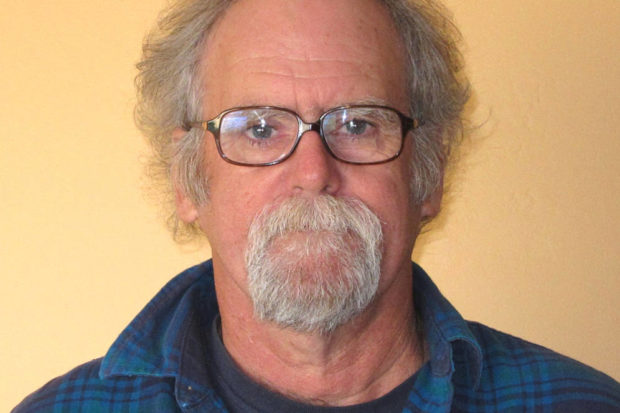
By Tom Frantz
Q: What kind of pollution is most common during the winter in the San Joaquin Valley?
A: During the months of October through March there is a significant drop in our ozone pollution and fine particulate matter (PM 2.5) increases to very harmful levels.
Q: Which one is more dangerous, ozone or fine particulate matter?
A: Ozone irritates and burns the lining of the lungs. It causes shortness of breath and asthma attacks. PM 2.5 causes damage to heart and lung tissue and is known to directly cause heart attacks and strokes. The greatest health effects to residents living in the Valley come from PM 2.5 pollution, which is dangerously high for long-term exposure on an annual basis and extremely dangerous on individual days quite frequently during the winter.
Q: What are the sources of PM 2.5 in the Valley?
A: On the worst days around Bakersfield more than 70% of the PM 2.5 is ammonia-based particles that form and accumulate during moist winter days when we have a high-pressure ridge forming a lid over the Valley. Diesel engines and power plant cooling towers emit a lot of fine particulates as well. Wood smoke from fireplaces, with current bans on wood burning, is a small part of the total but can be really bothersome for neighborhoods where one or two homes are ignoring the rules.
Q: Have our wintertime pollution levels improved?
A: The quick answer is no. Public monitoring for PM 2.5 has been done only since 2001 here in the Valley. Over that time, there has been improvement in some areas. Unfortunately, the southern region from Madera to Kern County has seen little improvement. In fact, the last two years have been the worst years ever recorded for this part of the Valley.
The Environmental Protection Association established a national health standard in 1997 for PM 2.5. There was a newer, more health protective standard established in 2006. We have not yet met the original standard. The Valley averaged 12 daily violations of this standard over the five-year period from 2008 to 2012. In 2013, there were 18 violations. In 2014, there have already been 19 violations and the worst month of December is yet to come.
Both the daily 24-hour standard from 1997 and the annual average standard from the same year have not been satisfied. Not only are we moving further away from these targets the last few years but our particulate levels continue to be the worst in nation and, on many days, measure significantly higher than levels in Beijing, China, during the 2008 Summer Olympics.
Q: How can people protect themselves?
A: When there are violations of the 1997 health standard, the air quality is in the “unhealthy” category. Everyone should avoid strenuous activity outside during those days. More sensitive people who have respiratory problems should not go outside. When the air pollution gets even worse, the category becomes “very unhealthy” and it is not safe for anyone to be outside for more than a few minutes.
Q: Do Valley residents know they should take precautions during bad air days?
A: Some people who keep aware of the air quality on a daily basis take precautions and choose the cleanest times of the day for exercise or strenuous work. Unfortunately, many of our high schools have ignored this issue and irresponsibly allow students to play football or soccer and run cross country during extremely bad episodes of air pollution. The San Joaquin Valley Air Pollution Control District (Air District) is first, and foremost, a public health agency. It has failed in its duty to adequately warn the public about the health risks of this type of pollution.
Q: Does all this bad air affect the economy?
A: A peer-reviewed health and economic study a few years ago estimated the annual cost to the Valley of not meeting the current air quality standards. The cost of fine particulate pollution amounted to nearly $6 billion annually. Doctor and hospital visits, missed work days, birth defects and premature births, purchase of medicine and premature death were all included in the cost.
Q: What needs to be done?
A: First, residents of the Valley need to better understand the problem of winter particulate pollution and learn how to protect themselves.
Second, we need the Air District to better control all sources of these deadly particles. It is not enough to simply announce that people should not idle their cars or light their wood stoves as we saw recently during a really bad pollution episode. Major industrial sources are contributing significantly to the problem and need to do more to reduce it. Ultimately, fossil fuel burning and the daily release of thousands of tons of ammonia from factory dairies will have to greatly decrease. Obviously, the Air District must enforce current rules better and implement whatever new ones are necessary to protect the health of all Valley residents.
*****
Longtime clean air advocate Tom Frantz is a retired math teacher and Kern County almond farmer. A founding member of the Central Valley Air Quality Coalition, he serves on the CVAQ steering committee and as president of the Association of Irritated Residents. CVAQ is a partnership of more than 70 community, medical, public health, environmental and environmental justice organizations representing thousands of residents in the San Joaquin Valley unified in their commitment to improve the health of Californians. For more information, visit www.calcleanair.org.
